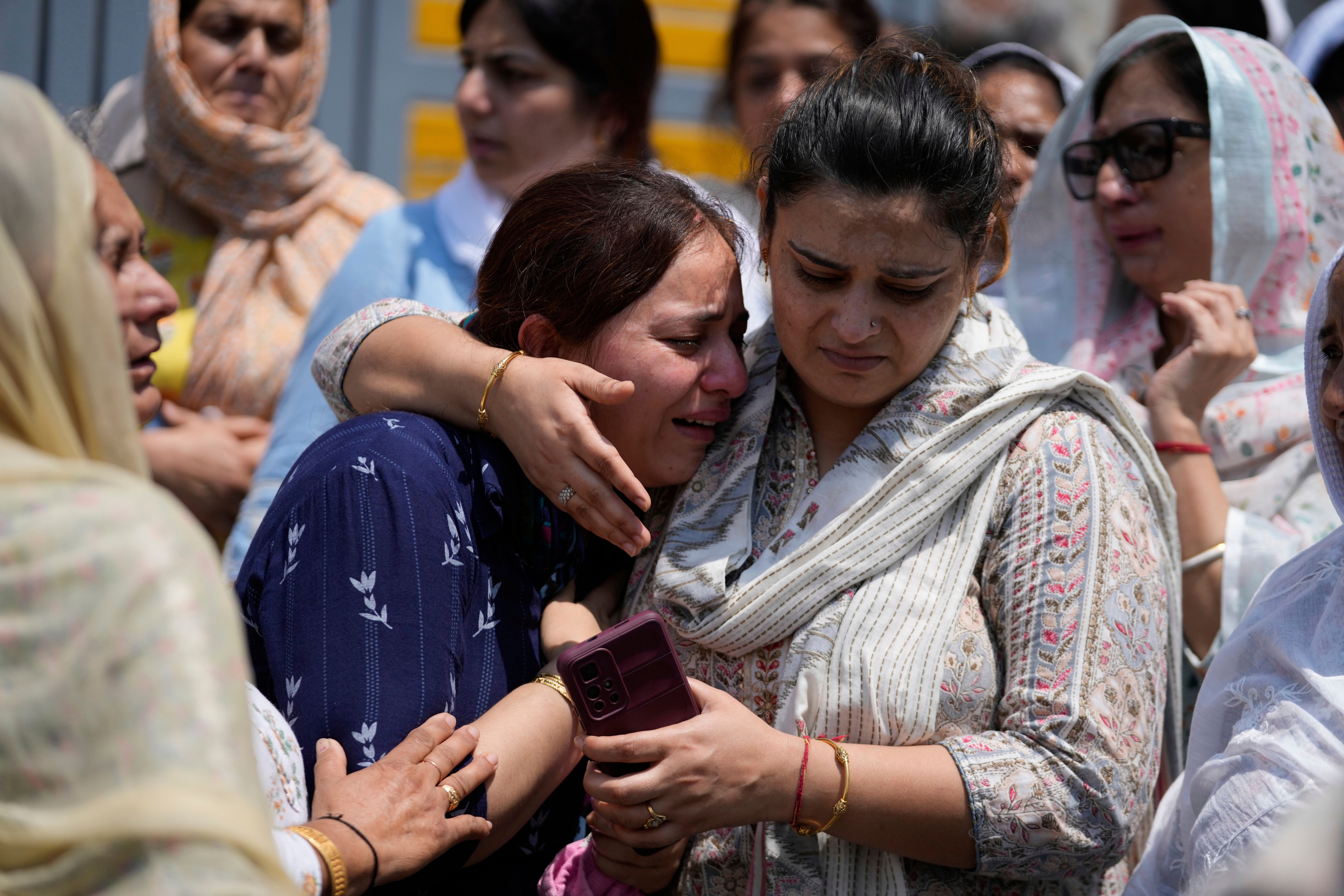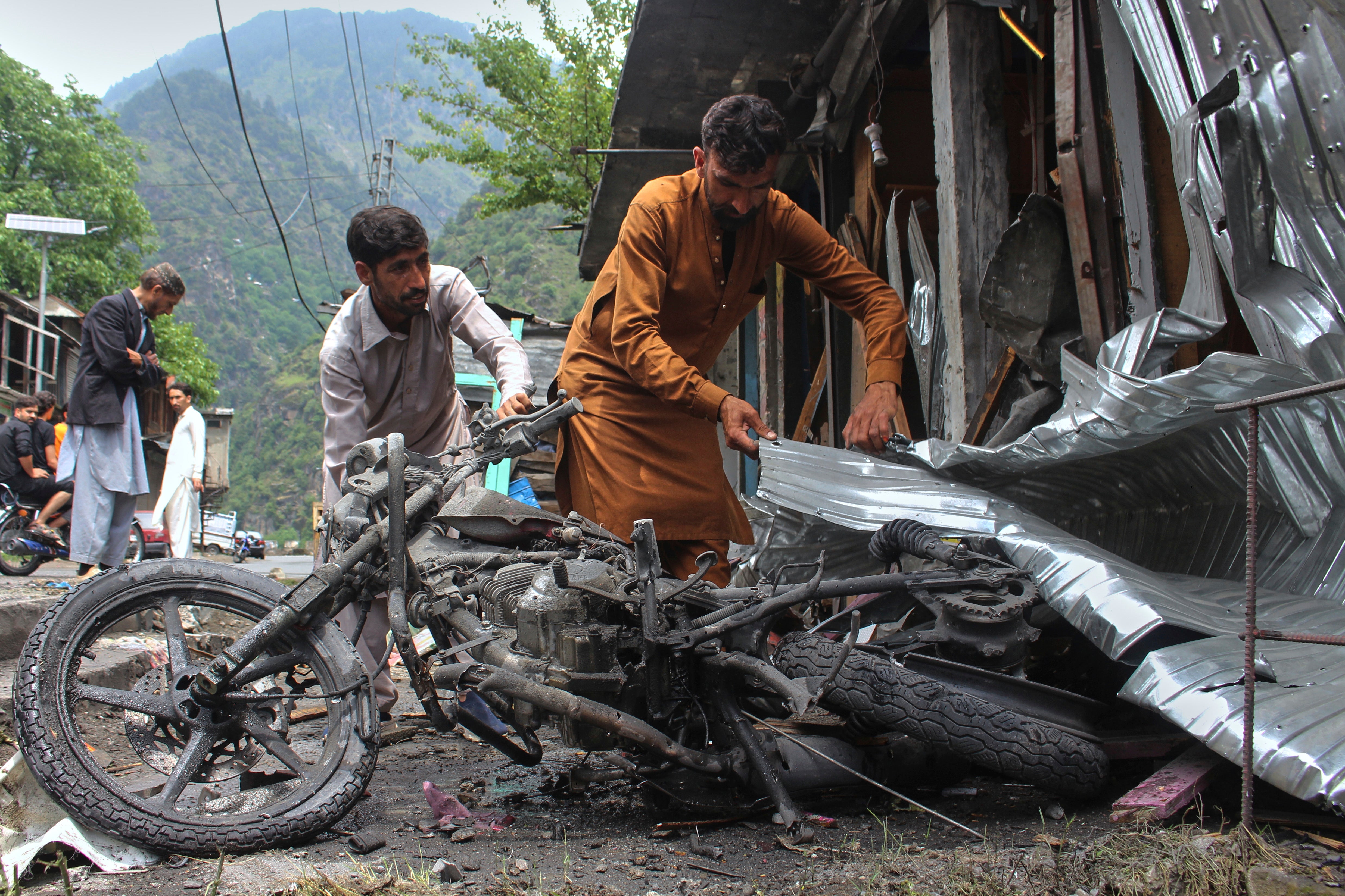India has denied targeting Pakistan’s alleged nuclear installations as the federal territory of Jammu and Kashmir observed the first peaceful night in days following a temporary truce between the two nations after days of military escalation.
The night remained mostly peaceful in Jammu and Kashmir and other areas along the international border, the Indian army said, adding that there were no reported incidents of military action on the “first calm night in recent days”.
The military operations chiefs of India and Pakistan will resume talks on Monday on the next steps to ensure peace between the two nuclear-armed rivals.
Air Marshal Awadhesh Kumar Bharti said India had gone more than 150km (93 miles) into Pakistan to strike Malir Cantonment in the city of Karachi. The air force also targeted a radar site in the city of Lahore and another site close to Gujranwala in Punjab province.
Dismissing speculation, the air marshal claimed that India had not targeted Kirana Hills, in Punjab province, which allegedly houses some of Pakistan’s nuclear installations. “Thank you for telling us that Kirana Hills houses some nuclear installation – we did not know about it. We have not hit Kirana Hills, whatever is there,” Air Marshal Bharti retorted following a reporter’s question.
“We also reiterate that our fight was with terrorists and their support infrastructure and not with the Pakistan military. However, it is a pity that the Pakistan military chose to intervene and bat for the terrorists, which compelled us to respond in kind,” he added.
US president Donald Trump pledged over the weekend to find a solution to the long-running Kashmir dispute after the south Asian nations reached a ceasefire on Saturday afternoon, for which he took credit.
The truce announced on Saturday followed four days of intense fighting between the neighbours in one of the largest military escalations in nearly three decades, in which almost 70 people were killed.
The Indian military released videos on Monday claiming it had shot down a Pakistani Mirage fighter jet and damaged military bases during its “Operation Sindoor”. India launched airstrikes on Pakistani soil to avenge the killing of 26 people in the Pahalgam valley in India-administered Kashmir in one of the worst attacks on tourists in decades.
India’s military has claimed that the strikes on Pakistan and Pakistan-administered Kashmir last week killed more than 100 militants, including prominent leaders.
Both India and Pakistan claimed to have downed each other’s jets in a dog fight that reportedly involved around 125 aircraft – the largest episode of aerial combat since the Second World War.
Lt Gen Rajiv Ghai, the director general of military operations, said on Sunday that India’s armed forces had struck nine militant infrastructure and training facilities, including sites used by the Lashkar-e-Taiba group, which India blames for carrying out major militant strikes in India and the disputed region of Kashmir.

“We achieved total surprise,” Lt Gen Ghai told reporters in New Delhi, adding that Pakistan was “erratic and rattled” in its response.
India accused Pakistan of backing the militants who carried out the massacre – a charge Islamabad denied.
The incident first led to a spat of tit-for-tat diplomatic measures between the two countries, which left bilateral ties between them at a near-historic low. The two expelled each other’s diplomats, closed their airspace and land borders, and suspended a crucial water treaty.
After Wednesday’s strikes on Pakistan, both sides exchanged heavy fire along their de facto border in the restive Kashmir region, followed by missile and drone strikes into each other’s territories, mainly targeting military installations and airbases. Dozens of civilians were killed on both sides in heavy shelling, the two countries said.
The Indian army claimed that 35 to 40 personnel of the Pakistan armed forces had been killed at the line of control, the de facto border that divides the Kashmir region.
Air Marshal Bharti said earlier that India had “definitely … downed a few planes”, without revealing the actual number or offering evidence. “There are losses from their side, which we have inflicted,” he said. He refused to comment on Pakistan’s claim to have shot down five Indian fighter jets, including a French-made Rafale, but said: “We are in a combat scenario and losses are a part of combat.”

Pakistan’s military told reporters on Sunday that it had not asked for a ceasefire, as was claimed by India, and that it was India that had sought the ceasefire.
Lt Gen Ahmad Sharif said Pakistan’s armed forces had targeted a total of 26 Indian military installations in response to India’s missile strikes, which were launched before dawn on Wednesday.
He said the military had vowed it would respond to the Indian aggression, and it has fulfilled its commitment to the nation. Lt Gen Sharif warned that any threat to Pakistan’s sovereignty or territorial integrity would be met with a “comprehensive, retributive, and decisive” response.
He claimed that Pakistan had exercised “maximum restraint” during the counterstrike, employing medium-range missiles and other munitions, and that no civilian areas had been targeted inside India.
Pakistan’s information minister Attaullah Tarar alleged last week that his country’s armed forces had killed 40 to 50 Indian soldiers along the line of control.

People on both sides of the border reported heavy exchanges of fire between Indian and Pakistani troops, which had subsided by Sunday morning.
In the Poonch area of Indian-administered Kashmir, people said the intense shelling from the past few days had traumatised them. “Most people ran as shells were being fired,” said college student Sosan Zehra, who returned home on Sunday. “It was completely chaotic.”
As part of the ceasefire, both nations agreed to stop immediately all military action on land, in the air and at sea. Pakistan has thanked the US, and especially President Trump, several times for facilitating the ceasefire.
The Indian military sent a “hotline message” to Pakistan complaining of violations of the ceasefire, which Pakistan denied flouting.
India has not said anything about Mr Trump or the US since the deal was announced. India’s prime minister Narendra Modi chaired a meeting on Sunday with top government and military officials.
US secretary of state Marco Rubio said he had spoken with British foreign secretary David Lammy and discussed the ongoing tensions between India and Pakistan, and called for both countries to maintain the ceasefire and to continue to communicate. Mr Rubio said the US supported direct dialogue between India and Pakistan and encouraged continued efforts to improve communications.

